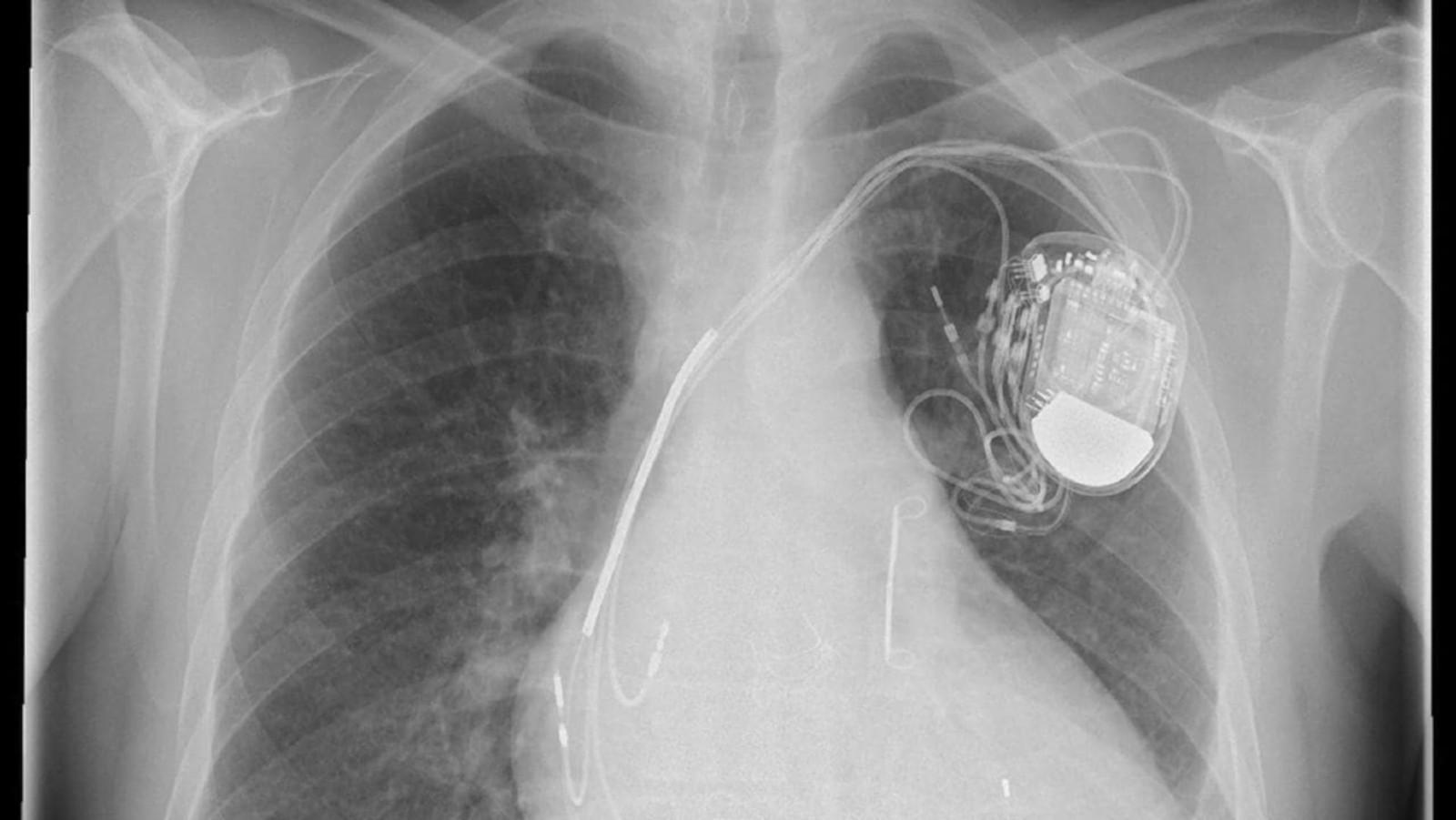Bradycardia, Slow Arrhythmias, Atrial Fibrillation and more
Atrial fibrillation is the most common cardiac rhythm disorder. As such, atrial fibrillation can either directly lead to a slow pulse (bradycardia) or the medication required to treat atrial fibrillation can cause a small pulse. However, bradycardia can also occur without atrial fibrillation, e.g. an AV blockageIt's a heart block that occurs when the electrical signal between the heart chambers and ventricles is impaired. This situation occurs when the electrical conduction system within the heart is sick. This disease leads to symptoms such as dizziness, shortness of breath and syncope. The treatment is a dual-chamber pacemaker. Two-chamber means that the atrium and the ventricle are each provided with an electrode (cables) connected to the pacemaker. Finally, resynchronization may be necessary in certain situations, in which case a 3-chamber pacemaker, also called a bi-ventricular system, is used.
Pacemaker implantation
With atrial fibrillation and other cardiac arrhythmias, pacemakers are used to bridge the diseased conduction system of the heart. The pacemaker consists of a housing and one or two electrodes (cables) that generate the connection between the unit (battery) and the heart. The electrodes connect the chambers of the heart through the venous system to the pacemaker, which lies under the skin just by the clavicula. With the electrodes, the pacemaker adapts its performance to the heart and ensures a sufficient pulse rate, in case it stops.

Types of Pacemakers
Single chamber system (VVI or AAI pacemaker)
This type of pacemaker consists of the housing and only one electrode. This electrode is either in the ventricle (VVI pacemaker) or in the atrium (AAI pacemaker). Single-chamber pacemakers are used for frequency control in patients with a diseased sinus node or atrial fibrillation.
Dual-chamber pacemaker (DDD pacemaker)
This type of pacemaker consists of a housing with two electrodes. One of the electrodes is in the atrium, the other in the ventricle. This allows the pacemaker to bridge any impaired conduction from the small to the large chamber. A DDD pacemaker works by adjusting its rate to the needs of the patient - for example, during sport or physical activity, the pulse may increase accordingly.
Triple-chamber system (CRT pacemaker)
A three-chamber pacemaker is a two-chamber pacemaker with an additional electrode on the left ventricle. This constellation leads to synchronous heart contraction, which means that both chambers of the heart contract. The heart's performance thus improves - and so do symptoms such as shortness of breath or similar. CRT therapy is an established therapy for heart failure. Thanks to better contraction of both ventricles, CRT therapy leads to significant symptom improvement.
Patient testimonial:
